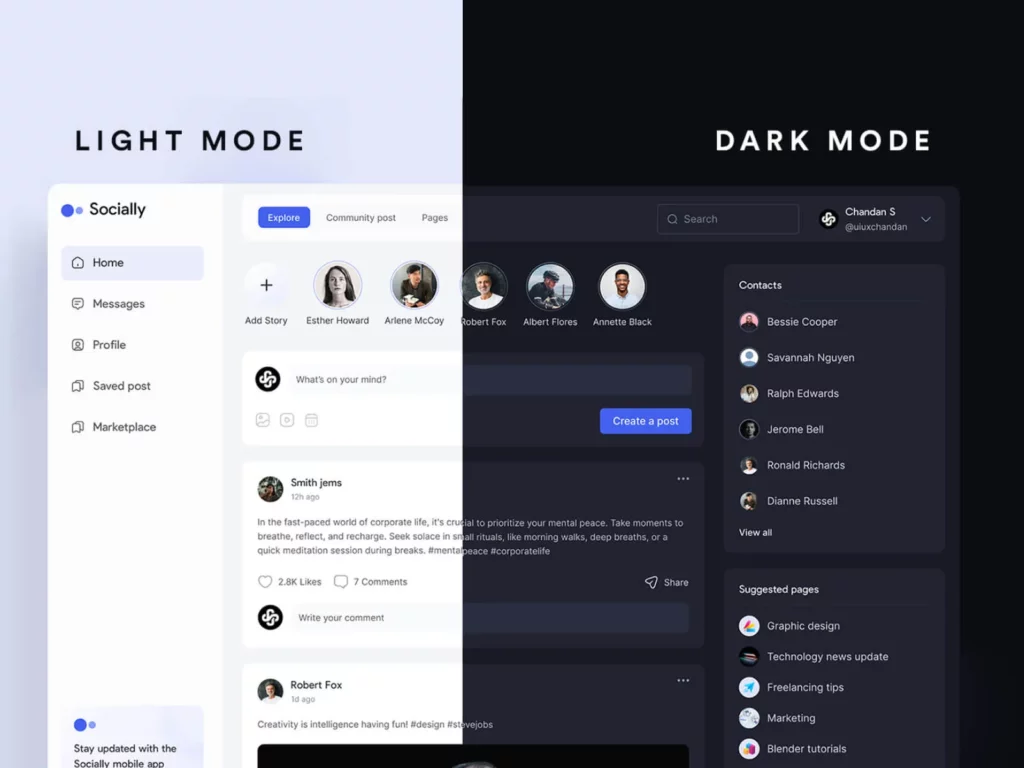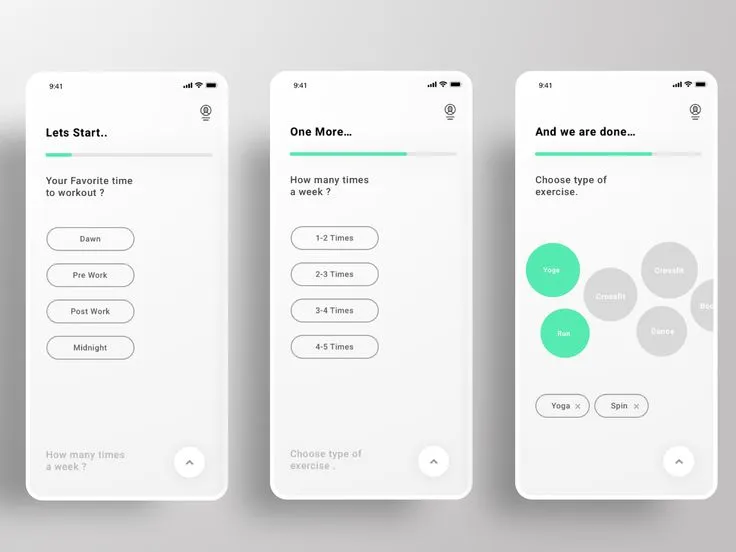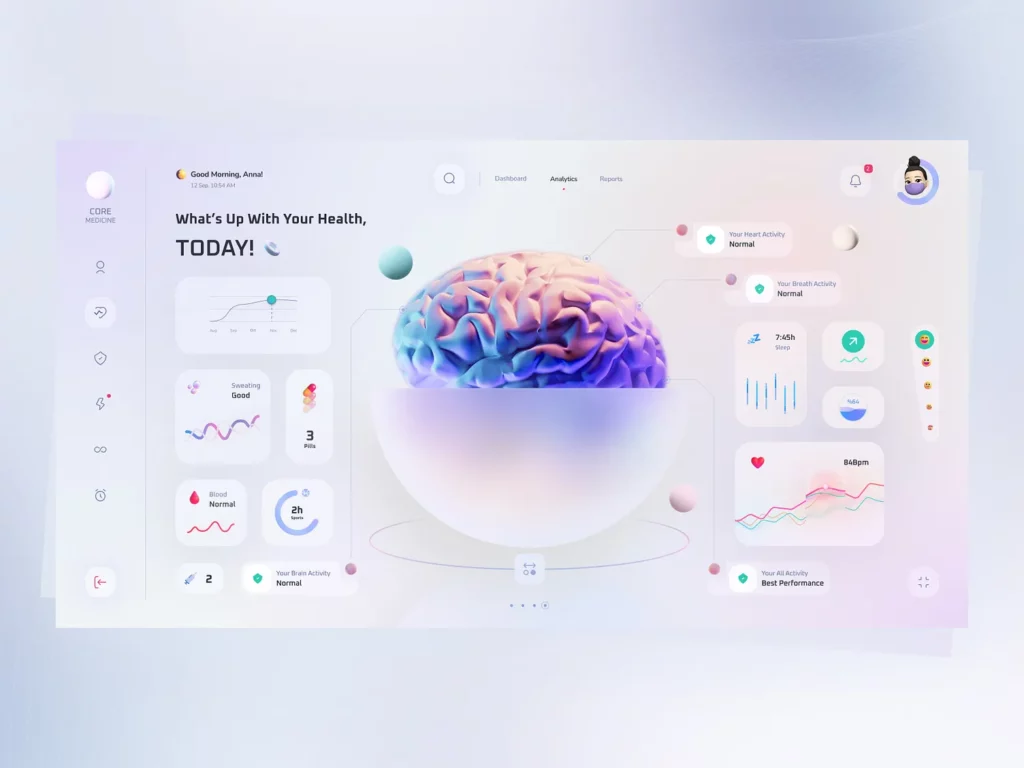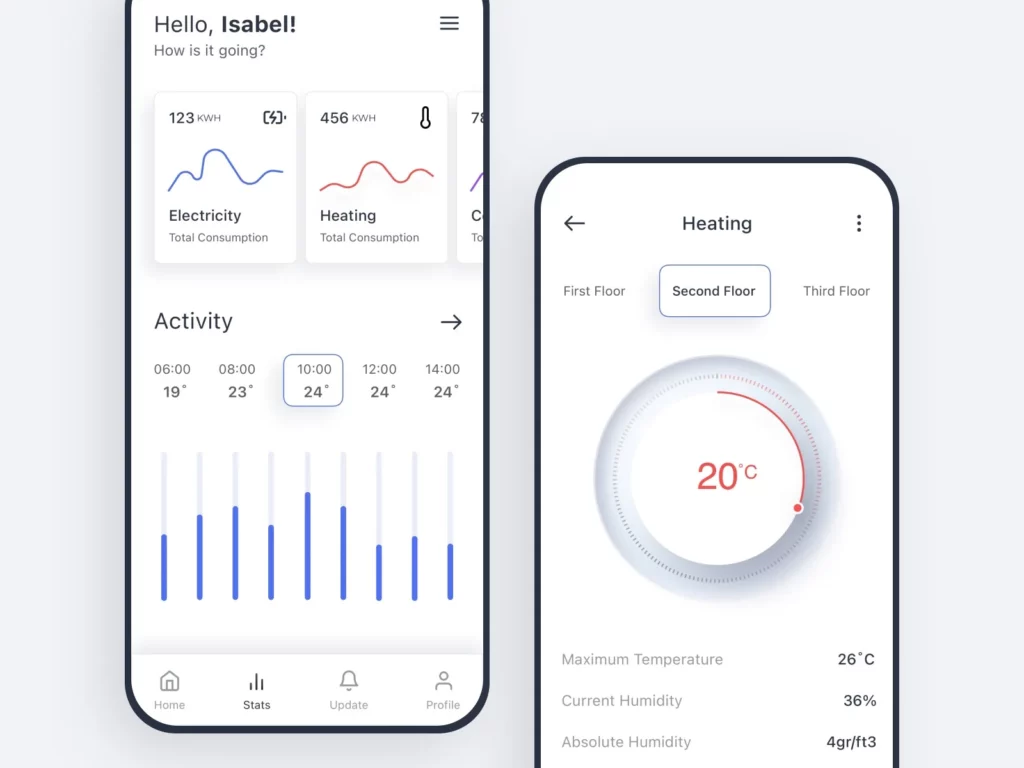
8 UX UI Design Trends You Must Know in 2024
Discover the most crucial UI UX trends that businesses should adhere to, ensuring a competitive edge and meeting the expectations of the new era’s users.
In 2024, the field of UI and UX design is akin to an ever-evolving ecosystem. Within this ecosystem, new trends rapidly emerge, and user expectations and preferences evolve every moment. Companies that can adapt to the latest UI/UX design trends can not only survive but also create impressive interfaces that set their digital products apart.
Here, we will delve into the eight most crucial UI and UX trends that businesses and design agencies should adhere to, ensuring a competitive edge, meeting the expectations of the new era’s users, and positioning their brands as innovative leaders in the field. The following are the eight UI/UX design trends that every digital designer should consider adopting:
Buttonless User Interface (Bottomless UI)
Over the past few decades, buttons have been a primary element of user interfaces. However, with the rise of technologies like natural language processing, machine learning, and speech recognition, buttonless interfaces have become the future of UI design. They no longer rely on buttons but utilize alternative methods such as eye tracking, voice commands, and gestures to facilitate user interaction. Smaller brands and design agencies must follow this trend, investing in technology to create seamless, advanced, and user-friendly buttonless interfaces.

Resurgence of Light Mode: Is The Light Mode Back In The Game?
In recent years, dark mode has become extremely popular in many applications and websites. However, with widespread adoption, some users have started to experience “dark mode fatigue.” Designers should take note of the resurgence of light mode, offering users the choice between light and dark modes or providing a theme that users can customize based on their preferences.

Heightened Focus on Personalization:
To stand out in a saturated market, digital products must offer a highly personalized experience. Personalization goes beyond interface customization and should consider characteristics such as roles and locations to ensure users get content and features that align closely with their needs.

Visualizing Complexities & Storytelling Data
Presenting data through storytelling has become a crucial element in UI design. By presenting data in a narrative form, designers have the opportunity to showcase important data to users in an interesting and easily understandable way. This requires selecting the right user data points, creating meaningful relevance, and weaving them into a captivating narrative.

Minimalism is Here To Stay
Minimalism has consistently been a popular trend, and even in 2023, it continues to evolve. By removing unnecessary elements and creating clean, focused interfaces, minimalistic design provides a better user experience while enhancing brand clarity and professionalism.

Crafting immersive user experience with AR and VR
With the progress of augmented reality (AR) and virtual reality (VR) technologies, their integration into UI/UX design is becoming increasingly common. This includes using augmented reality elements in applications to provide a richer user experience or creating entirely new interfaces and interaction methods in virtual reality.
Accessibility for Everyone, Anyone
Accessibility and inclusivity are becoming increasingly important for all UI/UX designs. This involves ensuring that designs are accessible to everyone, regardless of their ability levels, cultural backgrounds, or specific needs. This focus can help businesses expand their user base while establishing a positive brand image in the market.

Embracing Ethical Design
With growing concerns about climate change and environmental issues, ecological sustainability and social responsibility are gradually becoming crucial aspects of UI/UX design. Companies and design agencies should consider how their product and interface designs can support environmentally friendly, sustainable, and socially beneficial values. This includes reducing carbon footprints, designing energy-efficient interfaces, providing sustainable options, and ensuring products can be used equally across different cultures and social backgrounds.
This trend reflects a global shift in values, with users increasingly expecting products from companies that support sustainable development and social welfare. Therefore, incorporating ecological sustainability and social responsibility into UI/UX design strategies not only helps businesses expand their user base but also contributes to building a positive brand image.
Summary
In summary, these eight trends represent a snapshot of the current moment, and the UI/UX design field is continually evolving, with the possibility of new trends and challenges in the future.
As a software development expert grounded in UI/UX design, Cloud Interactive is committed to staying relevant to both technological and design advancements, flexibly meeting the evolving needs of users. Our services aim to provide flexible and agile solutions, ensuring your application or website maintains the latest and industry-relevant UI design.
Is your application or website’s UI design keeping up with these trends? If not, our experts at Cloud Interactive are ready to assist you, enhancing your brand’s digital image to be more intelligent, stylish, and truly user-centric!
By Cloud Interactive
Meet the masterminds behind the curtain at Cloud Interactive. We're not just software developers - we're also a content crew fuelled by caffeine and a thirst for knowledge. We translate tech jargon into plain English, dissect industry trends, and craft helpful tips that are informative and engaging. So, buckle up and join us on a journey through the ever-evolving and exciting world of technology!


